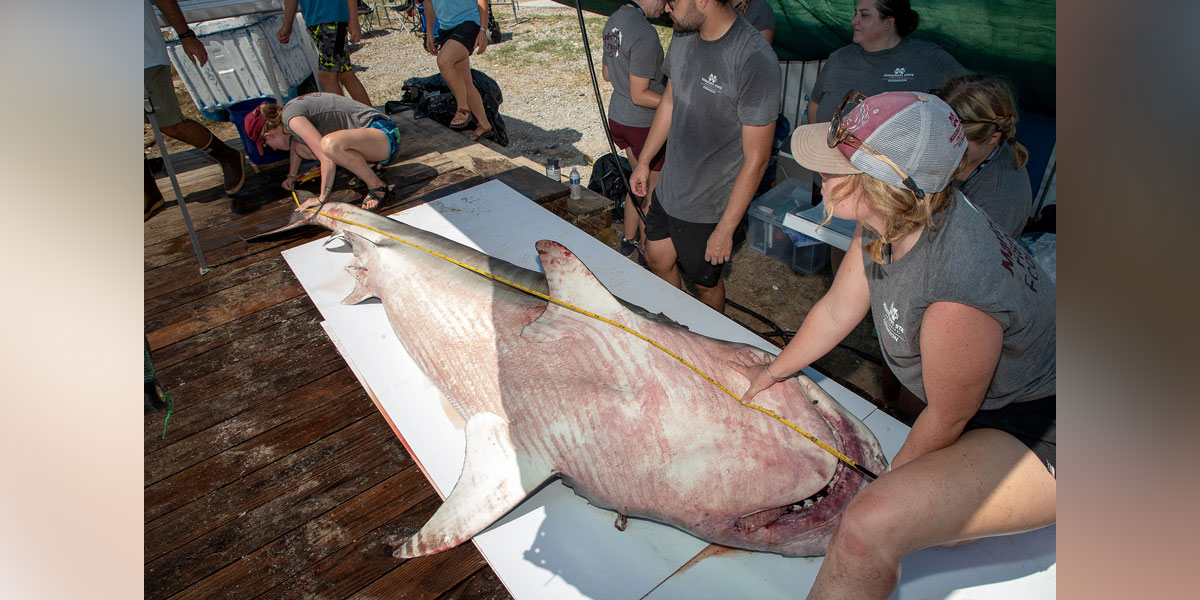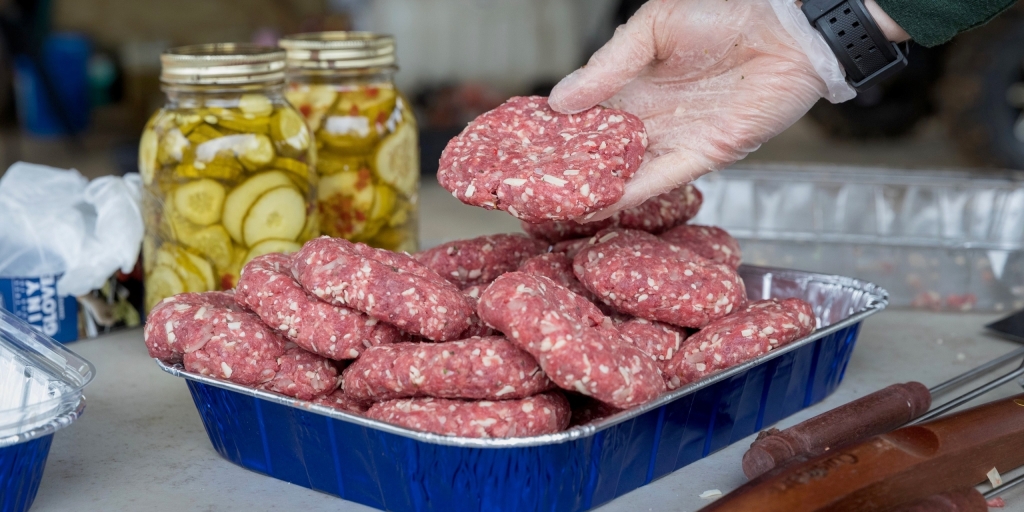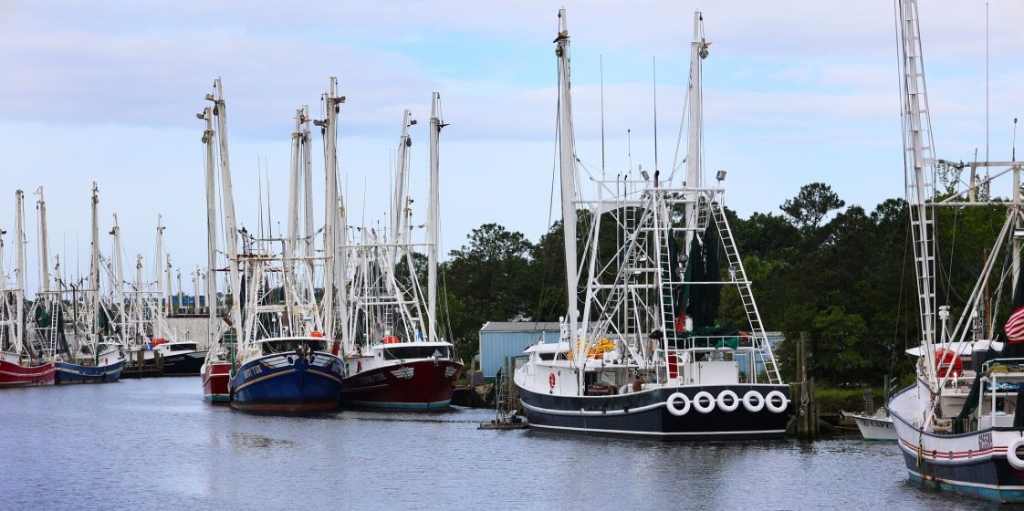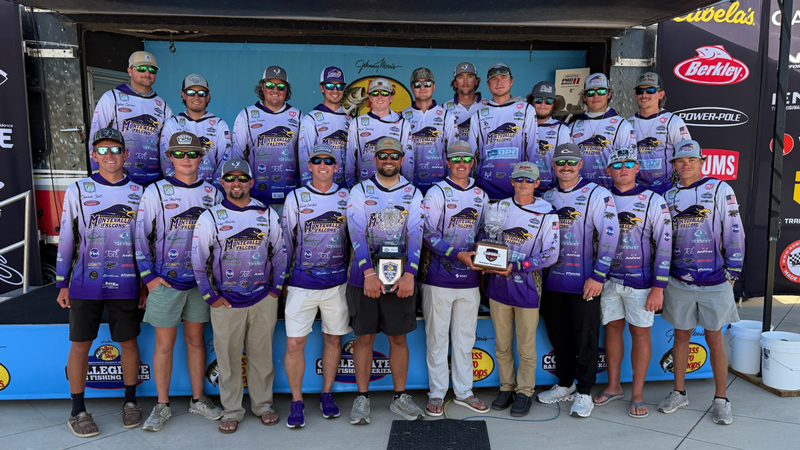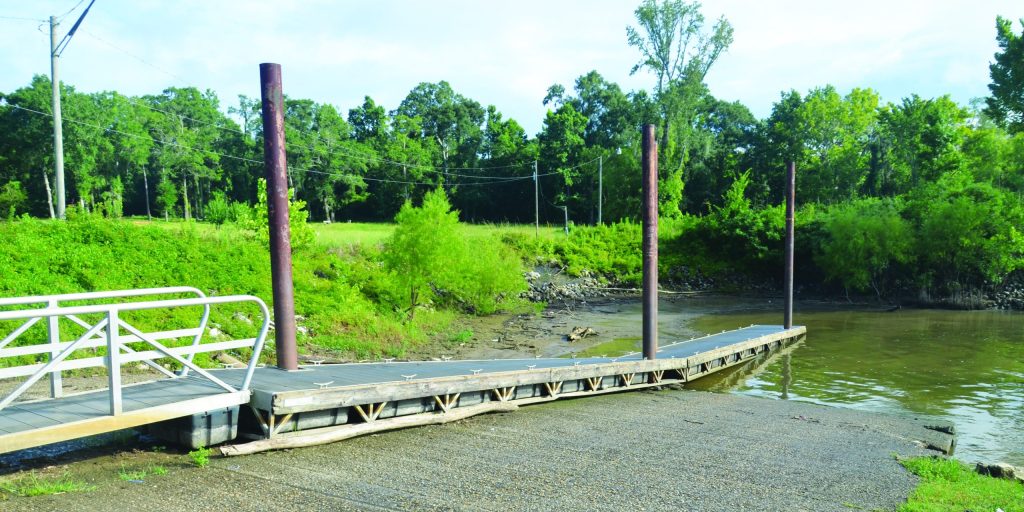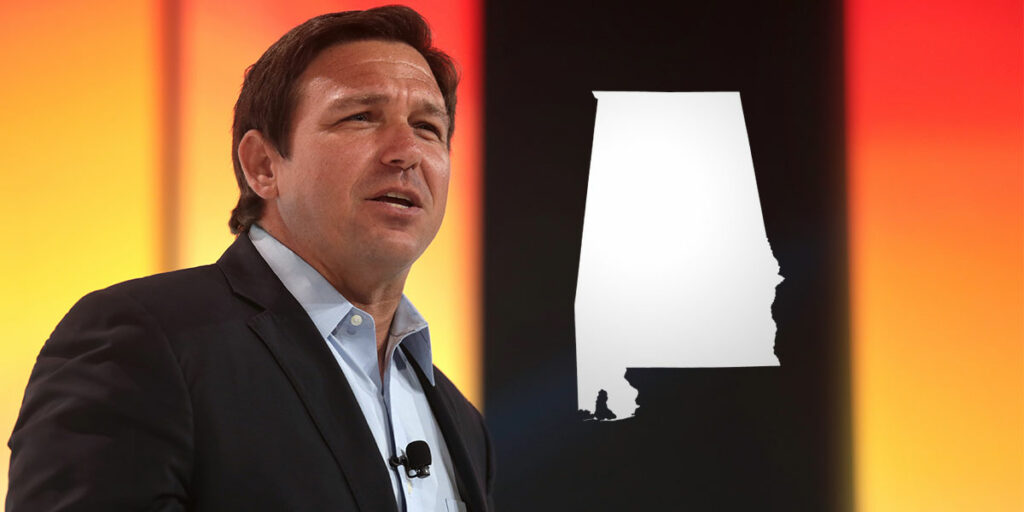The return of the shark category to the 89th annual Alabama Deep Sea Fishing Rodeo (ADSFR) was a rousing success with 15 sharks weighed in during the three-day event, with one riding the ferry from Fort Morgan in the back of a pickup to get to the rodeo site on Dauphin Island.
Tiger sharks pretty much reigned taking the top nine places on the leaderboard. James Mullek-Russell weighed in a 674.2-pound tiger to win the category, followed by Ethan Miller’s 658.4-pounder and Brett Rutledge’s 630.8-pounder. The top bull shark of the rodeo was a 434.2-pounder weighed in by Eric Vandrlessche.
As excited spectators and anglers waited for the sharks come to the weigh station, a bevy of marine scientists and students waited to advance the science on these predatory species.
Assistant rodeo judge Dr. Marcus Drymon of Mississippi State University and Mississippi-Alabama Sea Grant Consortium is renowned for his knowledge of the shark species in the northern Gulf of Mexico. He said sharks weighed in at the rodeo certainly provided a unique opportunity to gather a variety of samples from each species.
“I’ve been researching sharks in the north-central area of the Gulf along with Dr. (Sean) Powers for almost 20 years,” Drymon said. “A lot of the research we do is tracking their trends, their relative abundance and distribution as well as doing studies on their age and growth, reproduction, movements and migrations, post-release mortality and things of that sort.
“Here at the Alabama Deep Sea Fishing Rodeo, we’re taking the opportunity to take vertebrae from these very large individuals.”
Sharks don’t have bones; their skeletons are completely made up of cartilage. However, Drymon said scientists have a way of aging these fish other than counting the growth rings on the otoliths (ear bones) that are present in most fish species.
“Their vertebrae are calcified but not completely ossified,” he said. “It’s kind of a fine line, but technically speaking, sharks have no bones. The cartilage in their backbones and the cartilage in their jaws are the closest they have to true bones. Sharks don’t have otoliths like a bony fish. That’s how you determine the age of, say, a red snapper. Since we don’t have those, we use the next best things, which are the vertebrae. We section those and count the concentric band pairs to age those fish.”
Drymon said the scientists were able to gather samples from the reproductive organs, fins, livers and muscle tissue. Samples of bile, gall bladders and kidneys also were taken to assess overall health.
“We look at their stomachs, but they are usually empty,” he said. “They’ve evacuated their stomachs during the process of being captured.”
Most of the sharks weighed at the ADSFR were males, which are usually similar in length to but weigh less than the females, Drymon said. The rodeo placed stringent length requirements on the shark category with an 80-inch minimum for tiger, bull and hammerhead sharks and a 60-inch minimum on blacktips.
“These sharks are great samples, especially because they are the larger individuals of those species, so they’re a little more rare in the population,” he said. “So, for example, having the vertebrae from those individuals is very valuable in trying to determine the maximum age of that species.”
Drymon said the impact of the rodeo harvest will have a minimal effect on the shark populations.
“For the species being caught, their populations in the north-central Gulf of Mexico are in good shape,” he said. “We know this because we’ve seen their population trajectories slowly increase after decades of overharvesting. Due to strong management measures from NOAA Fisheries and the State of Alabama, we see these shark populations are starting to recover and can stand a limited, sustainable harvest.”
Of course, sharks weren’t the only species being studied. Marine scientists gathered samples from a variety of fish during the rodeo, which experienced near-perfect fishing conditions with calm seas and diminishing squalls.
Dr. Powers, professor and director of the new University of South Alabama School of Marine and Environmental Sciences and head rodeo judge, said about 800 samples were collected each day of the rodeo.
“We’re collecting samples from all the (33) species at the rodeo,” Powers said. “We look at mercury levels, which is something routine we do. We don’t expect any problems.
“We’re looking at flounder. We’ve seen a lot more flounder in the last two years, at least in my memory. We’ve seen a lot of big gray (mangrove) snapper.”
Research was also focused on Alabama’s signature reef fish, red snapper, which were weighed in at the rodeo in significant numbers.
“The really big red snapper specimens from the rodeo are excellent because one of the things we’re trying to look at is to see if the big females slow down their production of the eggs,” Powers said. “The idea is the bigger the female, the better, but that really hasn’t been tested that much. We think it is, but there is some evidence that as the fish get really old, they don’t produce as many eggs.”
Powers said a 20-inch red snapper is about 5 to 6 years old, and the oldest red snapper recorded was 56 years old and came from Alabama waters.
“Red snapper become sexually mature between 3 and 4 years old,” he said. “Essentially, the older and bigger they are, the more eggs they produce. That’s why we want to see those big females. Most of our fishery off Alabama is probably 3- to 6-year-olds, about four to six or seven pounds. Once they get to about 15 pounds, they’re probably producing the maximum number of eggs. We need to see a lot of 10-plus-year-old fish, which is why we’re doing the aging here.”
The largest red snapper at this year’s rodeo was a 27.2-pounder weighed in by Hyler Krebs. Clint Sheppard had a 26.77-pounder, followed by Edgar Miller with a 25.75-pounder.
“These are smaller than what we had five or six years ago,” Powers said. “Back then, if you didn’t have a 30-pound-plus, you didn’t have a chance. Not surprising, what I hear from the fishermen is they have to go farther offshore to catch the bigger red snapper. That’s a product of the state managing for the number of days. We could manage for a bigger fish, but you wouldn’t have as many days. It’s a tradeoff. You can’t have both.”
Not only did marine scientists collect otoliths from the red snapper, they also collected tissue samples, reproductive organs and stomach contents.
“The tissue sample will let us know what it’s eating,” Powers said. “We do chemical analyses, and different forage species have different chemicals.”
Powers said new technology will allow scientists to gain much more information from the flounder otoliths than was previously possible.
“For flounder, we have a new system where we take the chemistry across the otoliths from when it was a little baby fish all the way to however old it was when it was caught, 5 or 6 years old,” he said. “We can construct the chemical environment that fish was exposed to. This is new instrumentation that the Alabama Department of Conservation and Natural Resources helped us purchase. That system will tell us the salinity history and answer questions like, did these fish grow up in the (Mobile-Tensaw) Delta or did they come from Dog River or lower in Mobile Bay?
“One of the things we want to find out is how important that Delta area is. It is unique in chemical composition. With this, we can tell the proportion of the fish that use the Delta. I think the Delta may explain how good the recruitment is for flounder. Is the Delta salty enough? That Delta has so much habitat and so much vegetation, just a change of a few parts per thousand in salinity can make that area accessible or inaccessible to these fish.”
Visit www.adsfr.com for the complete leaderboard for the 33 fish species, jackpots and cash prizes.
PHOTOS: (Billy Pope) Marine scientists were able to gain extensive data from the 15 sharks weighed in at the Alabama Deep Sea Fishing Rodeo. The ADSFR was also an opportunity to gather information on Alabama’s signature reef fish, red snapper. Boats head to the ADSFR weigh station at Dauphin Island, known as the sunset capital of Alabama.
David Rainer is an award-winning writer who has covered Alabama’s great outdoors for 25 years. The former outdoors editor at the Mobile Press-Register, he writes for Outdoor Alabama, the website of the Alabama Department of Conservation and Natural Resources.




